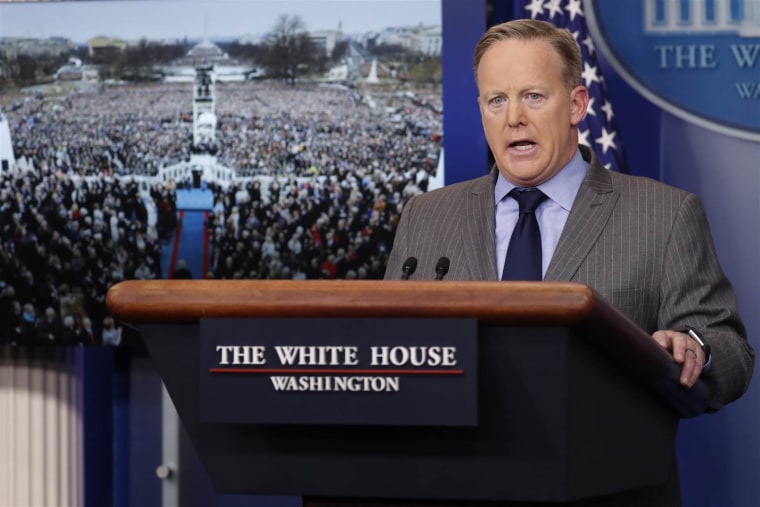The job numbers for February were released this morning, and the data was very encouraging: the U.S. economy added 235,000 jobs in February, with an unemployment rate of 4.7%. The White House, not surprisingly, is thrilled that the job market Donald Trump inherited from his predecessor is this strong as the new administration gets underway.That is, if the president actually believes the data. Trump spent months telling Americans not to believe official jobs reports, so it was hardly a surprise when a reporter asked White House Press Secretary Sean Spicer about whether Team Trump accepts the latest job figures or not. Spicer replied, with an unusually broad smile:
"Yeah, I talked to the president prior to this [briefing] and he said to quote him very clearly: 'They may have been phony in the past, but it's very real now.'"
Everyone chuckled and moved on. That's a shame.Look, I realize it was a lighthearted moment, and my point is not to sound like a killjoy, but we can't really have a credible political discussion if the president -- and the president alone -- is supposed to tell us when the jobs numbers are real and when they're not, as if it's our job to simply accept Donald Trump's strange declarations as fact.As the Washington Post's Greg Sargent added, "It's key that Trump explicitly told Spicer to recite this line to the press corps. He's telling them who gets to say what's true."Remember, at different points in the campaign, Trump publicly argued that the unemployment rate was 20% – or possibly 42% – even as reality pointed to a rate below 5%. After the election, at a pre-inaugural press conference, the Republican declared there are “96 million really wanting a job and they can’t get” -- a claim he inexplicably repeated in his address to Congress two weeks -- which was nonsensical, even for him.The unemployment rate, Trump declared as recently December, is “totally fiction.”Now, evidently, we're supposed to believe his bonkers conspiracy theory involving job numbers and the Bureau of Labor Statistics -- the one Trump told everyone to accept as fact -- is no longer in effect, because he says so.The entire dynamic has a "heads I win, tails you lose" quality. Last year, when there were plenty of months showing job growth this strong (and stronger), Trump effectively told voters those figures were fake, the economy is awful, and everyone should only listen to him. Today, with nearly identical numbers, Trump is telling voters the figures are real, he's saved the economy, and everyone should still only listen to him.What's less clear is what happens when the economic recovery that began in 2010 sputters. If the job market slows and unemployment starts climbing, should we expect a return to the old conspiracy theory, or will there be a new one about Labor Department officials who are secretly trying to sabotage the embattled president, perhaps as part of some Obama-inspired plot?Postscript: As we discussed earlier, there are related questions the White House may find difficult to answer, such as how the job market can remain so healthy with all of those nasty Obama-era policies – the Affordable Care Act, environmental protections, Wall Street safeguards, et al – in place. For that matter, if last month was evidence of a great new national spirit, inspired by Trump's greatness, why are the February 2017 numbers nearly identical to the February 2016 and February 2015 numbers?
